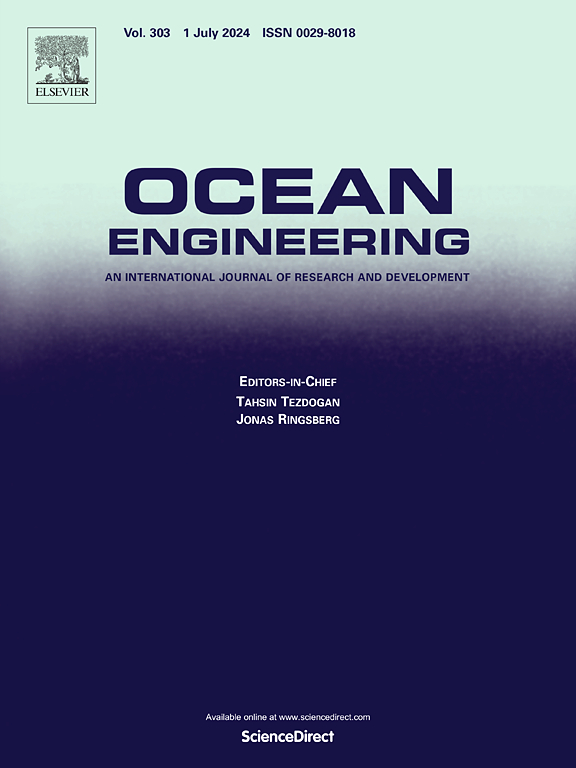Hydrodynamic performance of an OWC wave energy converter combined with a perforated wall
IF 4.6
2区 工程技术
Q1 ENGINEERING, CIVIL
引用次数: 0
Abstract
This paper investigates the hydrodynamic performance of a novel Oscillating Water Column (OWC) device, which featuring a perforated wall positioned in front of the OWC chamber. Designed to be integrated into a caisson breakwater, this device aims to harness green energy from ocean waves while strengthening harbor infrastructure. A three-dimensional numerical simulation, utilizing the Reynolds-averaged Navier-Stokes equations, was conducted to explore the flow characteristics and hydrodynamic performance of the OWC. The numerical simulations were validated using data from the literature and current experimental measurements. This study examines the impacts of the underwater opening height of the OWC chamber wall and the novel front perforated wall on flow characteristics and hydrodynamic performance using prototype-scale simulations. The simulation results indicate that the current OWC device achieves optimal hydrodynamic efficiency at a relative water depth kh = 1.58 with a relative underwater opening height hb/h = 0.6 and a porosity of the front perforated wall λs = 0.5. A comparative analysis of the hydrodynamic performance of the novel OWC device against U-OWC and conventional OWC devices was also conducted using local site conditions. The findings demonstrate that the current OWC device exhibits a notable improvement in hydrodynamic efficiency.
求助全文
约1分钟内获得全文
求助全文
来源期刊

Ocean Engineering
工程技术-工程:大洋
CiteScore
7.30
自引率
34.00%
发文量
2379
审稿时长
8.1 months
期刊介绍:
Ocean Engineering provides a medium for the publication of original research and development work in the field of ocean engineering. Ocean Engineering seeks papers in the following topics.
 求助内容:
求助内容: 应助结果提醒方式:
应助结果提醒方式:


